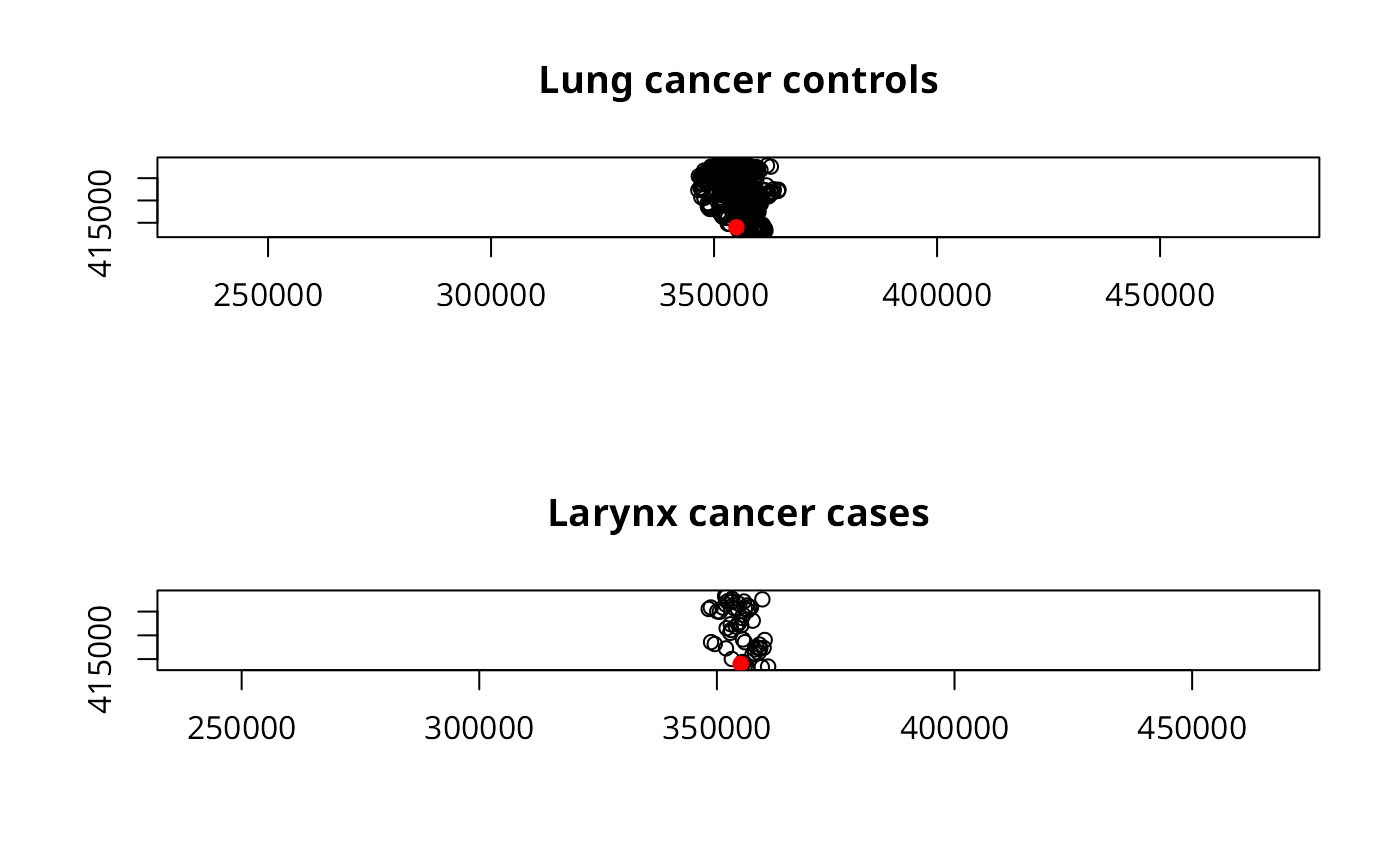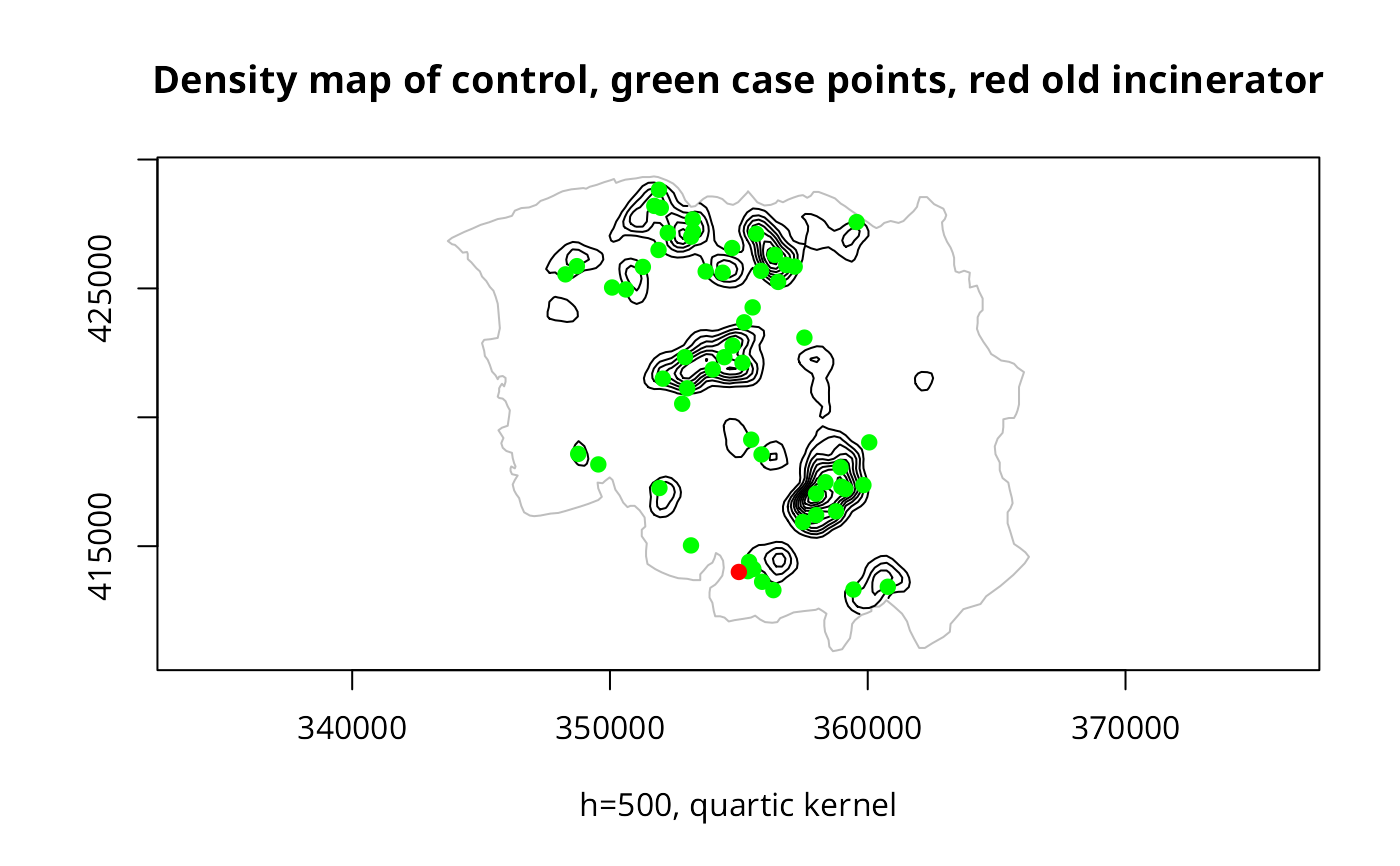Cancer cases in Chorley-Ribble
southlancs.RdLocations of cases of cancer of lung and larynx in
Chorley-Ribble, Lancashire. The data set is split into a points object southlancs.pts and a
case/control 0/1 vector southlancs.cc. There are 917 controls and 57
cases in this data set - these numbers differ from 978 and 58 in Diggle (1990)
and Diggle and Rowlingson (1994). The data set also includes the approximate
location of an old incinerator old.incinerator, as well as
southlancs.bdy, the study area boundary.
data(southlancs)Format
A data frame with 974 observations
| [,1] | x | numeric | grid eastings (metres) |
| [,2] | y | numeric | grid northings (metres) |
| [,3] | cc | numeric | case/control, lung=0, larynx=1 |
Source
Diggle, Gatrell and Lovett, 1990, - Bailey and Gatrell 1995, ch. 3.
References
Bailey and Gatrell 1995, ch. 3; Diggle, P. (1990) A point process modelling approach to raised incidence of a rare phenomenon in the viscinity of a prespecified point. Journal of the Royal Statistical Society, A, 153, 349-362; Diggle, P. and Rowlingson, B. (1994) A conditional approach to point process modelling of elevated risk. Journal of the Royal Statistical Society, A, 157, 433-440.
Examples
data(southlancs)
op <- par(mfrow=c(2,1))
pointmap(southlancs.pts[southlancs.cc == 0,])
pointmap(old.incinerator, add=TRUE, col="red", pch=19)
title("Lung cancer controls")
pointmap(southlancs.pts[southlancs.cc == 1,])
pointmap(old.incinerator, add=TRUE, col="red", pch=19)
title("Larynx cancer cases")
 par(op)
polymap(southlancs.bdy,border="grey")
contour(kernel2d(southlancs.pts[southlancs.cc == 0,],
southlancs.bdy, h=500, nx=100, ny=100), nlevels=20,
add=TRUE,drawlabels=FALSE)
#> Xrange is 343709.1 366255.6
#> Yrange is 410927.2 429344.1
#> Doing quartic kernel
pointmap(southlancs.pts[southlancs.cc == 1,], add=TRUE, pch=19,
col="green")
pointmap(old.incinerator, add=TRUE, pch=19, col="red")
title(xlab="h=500, quartic kernel")
title("Density map of control, green case points, red old incinerator")
par(op)
polymap(southlancs.bdy,border="grey")
contour(kernel2d(southlancs.pts[southlancs.cc == 0,],
southlancs.bdy, h=500, nx=100, ny=100), nlevels=20,
add=TRUE,drawlabels=FALSE)
#> Xrange is 343709.1 366255.6
#> Yrange is 410927.2 429344.1
#> Doing quartic kernel
pointmap(southlancs.pts[southlancs.cc == 1,], add=TRUE, pch=19,
col="green")
pointmap(old.incinerator, add=TRUE, pch=19, col="red")
title(xlab="h=500, quartic kernel")
title("Density map of control, green case points, red old incinerator")
